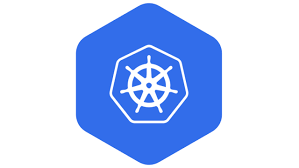Getting Started with Docker for Beginners
In the rapidly evolving world of software development, Docker has emerged as a critical tool for creating, deploying, and managing containerized applications. Containers allow developers to package applications with all the necessary dependencies, ensuring consistency across different environments. This blog post will introduce you to Docker, its fundamental concepts, and how to get started with Docker for your projects.
Table of Contents
➡ What is Docker?
➡ Why Use Docker?
➡ Installing Docker
➡ Docker Basics: Images and Containers
➡ Your First Docker Container
➡ Managing Docker Containers
➡ Docker Compose: Simplifying Multi-Container Applications
➡ Conclusion
What is Docker?
Docker is an open-source platform designed to automate the deployment, scaling, and management of applications in lightweight containers.
Containers are isolated environments that include everything needed to run an application, such as code, runtime, libraries, and configurations.
This ensures that the application runs the same way regardless of where it is deployed.
Why Use Docker?
Consistency: Docker ensures that your application runs consistently across different environments (development, testing, and production).
Isolation: Each container runs in its own isolated environment, which reduces conflicts between applications.
Scalability: Docker containers can be easily scaled up or down to handle varying loads.
Efficiency: Containers are lightweight and share the host system's kernel, making them more efficient than traditional virtual machines.
Installing Docker
To get started with Docker, you need to install it on your machine. Docker provides installation packages for various operating systems, including:
Docker Basics: Images and Containers
Images: Docker images are read-only templates used to create containers. An image includes the application code, libraries, and dependencies.
Containers: Containers are instances of Docker images that run applications. Each container is isolated from the host system and other containers.
Your First Docker Container
Let's run a simple Docker container using the official "hello-world" image. Open your terminal and execute the following command:
Run this command: ***docker run hello-world***`
This command does the following:
1. Downloads the "hello-world" image from Docker Hub (if not already downloaded).
2. Creates a new container from the image.
3. Runs the container, which executes the "hello-world" application and prints a message to the terminal.
Managing Docker Containers
Here are some basic commands to manage Docker containers:
- List running containers: `docker ps`
- List all containers (running and stopped): `docker ps -a`
- Stop a running container: `docker stop <container_id>`
- Remove a container: `docker rm <container_id>`
Docker Compose: Simplifying Multi-Container Applications
Docker Compose is a tool for defining and running multi-container Docker applications. With Compose, you can use a YAML file to configure your application's services, networks, and volumes.
Here’s a simple example of a `docker-compose.yml` file for a web application:
docker-compose.yml
version: '3'
services:
web:
image: nginx:latest
ports:
- "80:80"
database:
image: mysql:latest
environment: MYSQL_ROOT_PASSWORD: EXAMPLE_PASS
Conclusion
Docker is a powerful tool that can streamline the development and deployment of applications by providing a consistent and isolated environment.
By understanding the basics of Docker images, containers, and Docker Compose, you can start leveraging the power of Docker for your projects.
As you become more comfortable with Docker, you can explore advanced features like networking, volumes, and orchestration with Kubernetes.
More Blogs

Machine Learning Basics: An Introduction
Machine learning is a branch of artificial intelligence that enables computers to learn from data and make decisions or predictions without being explicitly programmed. This blog post provides an introduction to machine learning, its fundamental concepts, and applications.

Introduction to Kubernetes
Kubernetes is an open-source platform designed to automate the deployment, scaling, and operation of application containers. It groups containers that make up an application into logical units for easy management and discovery. This blog post will introduce you to Kubernetes, its core concepts, and how to get started with Kubernetes for your containerized applications.